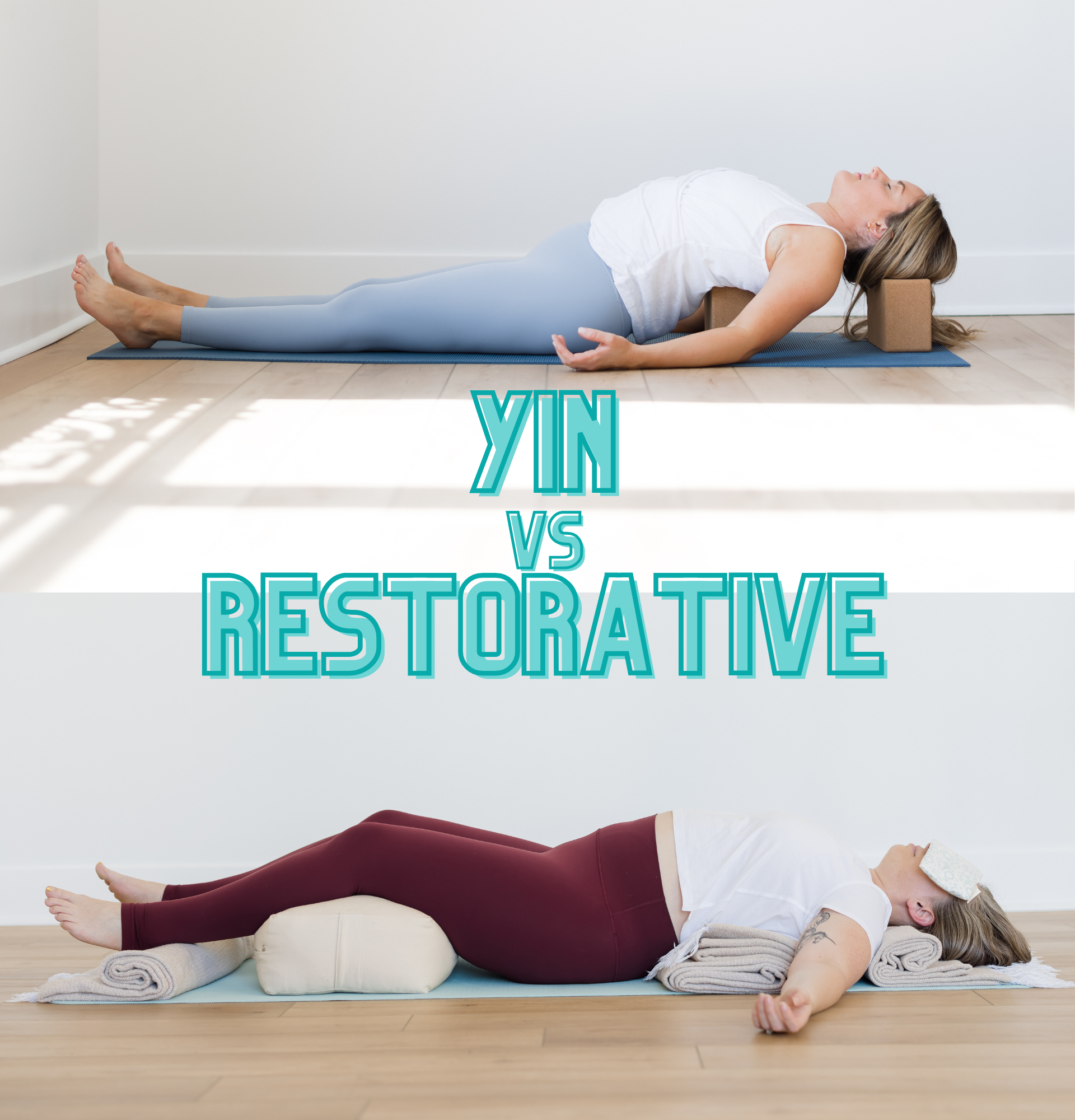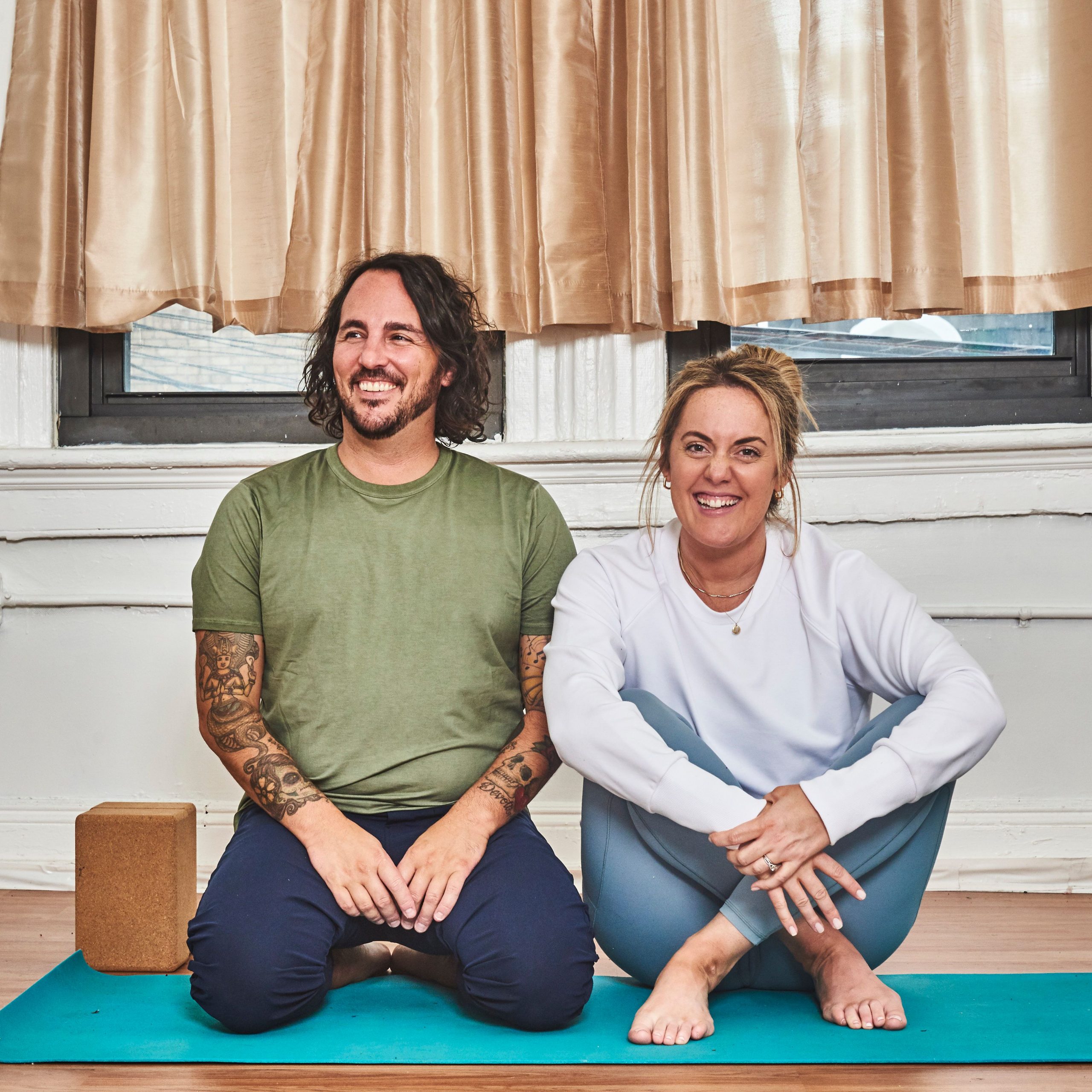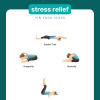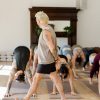
Yoga’s history stretches back thousands of years, but yin and restorative yoga are two practices which were developed more recently. Both practices take a slower pace, hold postures for a longer duration and use props heavily. You’ll also usually stay on the floor for the entire class.
Yin yoga and restorative yoga, while similar, are actually quite different…
Both styles are gentle and suitable for beginners or anybody who might be interested. There aren’t many poses covered in a single class, and transitions are done slowly. The gentle pace and long holds often draw comparisons between yin yoga and restorative yoga but there are a number of key differences between these two practices.
Key Differences of Yin and Restorative Yoga:
In this article, we’re going to look at yin and restorative yoga to better understand their differences. They’re rooted in unique philosophy, and each have unique objectives. We’re going to take a look at each practice to better understand the nuance between them but first lets summarize some of the main differences:
There is an active stretch in yin yoga but in restorative yoga, the goal is to be totally supported by your props with only passive movements or stretches.
In yin yoga the focus is on stretching your connective tissues, but in restorative yoga the focus is on the release of mind-body tension and bringing the nervous system into a state of healing.
Both styles use props, however, in yin yoga when props are used, they are meant to either deepen or ease the stretch. In restorative yoga, props are used to completely support your body. Restorative yoga will use props more frequently than yin yoga.
Restorative yoga poses are held longer than yin yoga poses!
Yin yoga is rooted in ancient eastern philosophies and draws these elements into the practice.
Let’s look at these two incredible styles to learn a little bit about what they are, who might like them, and what their unique benefits are…
What is Yin Yoga?
Yin yoga is a practice that focuses on stretching the connective tissue in order to lengthen them and help release built-up tension. It evolved out of a practice called ‘Taoist Yoga’ which incorporated elements of Taoist philosophy into yoga. The name ‘Yin’ yoga comes from Yin/Yang philosophy which draws attention to the balance between opposing forces. More energetic styles of yoga like vinyasa yoga would be considered ‘yang’ while yin yoga postures are meant to balance these energetic practices with calm, deep stretches.
The poses are held anywhere from two to seven minutes and work with the energy meridians in your body to help increase flexibility, improve joint mobility, and release trauma in the body.
Traits of Yin Yoga
- Focuses on the connective tissues of the body: While most yoga practices will stretch and strengthen the muscles, yin yoga is going to bring the stretch into deeper connective tissue. Stimulating deeper tissue like fascia is meant to cause energetic benefits through-out the body and can help to improve tissue elasticity along with joint mobility.
- Poses are held for 2-7 minutes: In order to stimulate the connective tissue, poses in yin yoga are held for a longer period of time. Deep connective tissue is less elastic than muscular tissue, so a longer hold can encourage a better release of tension.
- Rooted in Eastern philosophy: Ancient Chinese and Indian cultures had similar philosophical concepts, which yin yoga incorporates into the practice. For example, both cultures believed in a system of energies within the body and had a similar understanding of meditation accompanied by a physical practice and breathwork.
Yin yoga is best for those who want to:
- Balance a more energetic exercise routine
- Increase flexibility
- Keep joints healthy and mobile
- Improve posture
- Release trauma and emotions that become stored in the body
Benefits of Yin Yoga
- Improves joint health: Deeper stretches in yin yoga can help to encourage better joint mobility and flexibility.
- Encourages healthy connective tissue: Deep connective tissue is less elastic than muscular tissue and it can sometimes be a neglected part of our anatomy during regular fitness routines.
- Brings balance to our bodies & lives: Taoist philosophy of Yin/Yang focuses on the balance of opposing forces. In a modern world of constant stimulation, yin yoga can deliver a little more ‘yin’ energy in a world of yang.
- Reduces stress & anxiety: Just like any yoga practice, yin yoga can help to reduce stress and anxiety and bring peace of mind.
What is Restorative Yoga?
Restorative yoga is a calming practice that relies on blocks, straps, sandbags, bolsters and blankets to create a passive release of mind and body. It’s all about the prop usage. Restorative yoga evolved from the teachings of B.K.S Iyengar who sought out the healing properties of yoga after experiencing a series of illnesses during childhood.
As the name suggests, restorative yoga brings our body into a state of healing or restoration. In simple terms, we can view our nervous system in two different modes: One mode is our ‘fight or flight‘ mode, which is constantly stimulated in the modern world and the other is a calming state. When our nervous system registers safety, it kicks off all sorts of healing processes within our body. Restorative yoga helps to bring us into that state of balance without any active stretch or engagements in the body.
Traits of Restorative Yoga
- Brings our body into a state of restful healing: In restorative yoga, the combination of supportive props and longer holds can help bring a sense of calm and comfort that triggers our body’s healing mechanisms. These healing mechanisms are rooted in our nervous system, which can be influenced by external stimulation and physical comfort.
- Postures are held for 5-20 minutes: Restorative yoga is going to really bring the body into a deep state of relaxation through long poses.
- Props are used (a lot!): In order to make sure that the body is supported properly, props are used heavily. They don’t just support the body physically, but they also help to create a sense of comfort and support for the practitioner who is essentially wrapped up in a cocoon of props during practice.
Restorative yoga is best for:
- Meditation
- Those looking to heal
- Stress release
- Deep relaxation
- Creating a sense of safety in the mind and body
- Reaching a state of mindful rest
Benefits of Restorative Yoga
- Activates the body’s healing mechanisms: Restorative yoga brings the body into a state of healing or restorative by activating our natural healing mechanisms.
- Promotes deep calm and relaxation: Falling asleep is rather common in a restorative yoga class – and it’s no surprise! This format of yoga is incredible soothing and can help to bring a total sense of calm and relaxation for practitioners.
- Boosts the immune system: When we aren’t well rested, our immune system can start to suffer. Restorative yoga can help bring us the rest and relaxation needed to keep our immune system functioning healthy and happy.
Conclusion:
Yin yoga and restorative yoga are both gentle and appropriate for all levels of students, from total beginners to experienced practitioners to athletes and seniors or even people with injuries and movement limitations. While they share similarities they are definitely unique formats with separate objectives.
Students should try both types of yoga to see which one best suits their needs, and might even decide to add both into a regular practice. If you’re interested in learning more about yin yoga, feel free to enroll into YogaRenew’s Yin Yoga Teacher Training. If Restorative yoga is more your speed, try our Restorative Yoga Teacher Training.
Join our mailing list for incredible weekly content!
[convertkit form=5652366]








